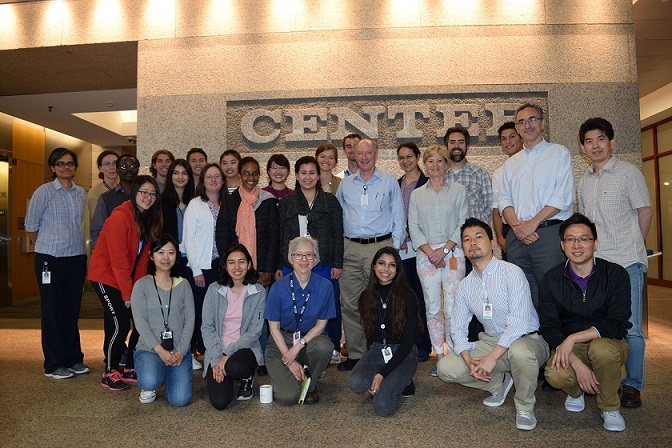Peer Reviewed Cancer



Posted August 30, 2017
Mark C. Poznansky M.D., Ph.D., Massachusetts General Hospital

Mark C. Poznansky M.D., Ph.D.
Roughly 3,000 new cases of mesothelioma are diagnosed each year in the United States, with a median survival of approximately 1 year.1 Asbestos exposure or exposure to other elongated mineral particles is considered the primary risk factor for developing mesothelioma. Despite increased regulations to limit the use of exposed asbestos fibers, the persistent incidence of this disease in individuals as young as 25 emphasizes the need for continued research and awareness around this lethal cancer.
With a Fiscal Year 2013 Idea Award with Special Focus, Dr. Mark Poznansky, ?director of the Vaccine and Immunotherapy Center (VIC) at Massachusetts General Hospital, developed, refined, and tested a combination immunotherapy for the treatment of malignant mesothelioma (MM). MM is known to overexpress the chemokine and receptor pair, CXCL12/CXCR4, and the tumor-associated protein, mesothelin (MSLN), on its surface. It is unclear what advantage, if any, MSLN affords, but the production of CXCL12 helps these cells evade clearance by the immune system through developing an inhibitory barrier around them. By affecting both sets of proteins, the researcher and his team hypothesized that the combination of CXCL12 antagonist, AMD3100, and a MSLN-targeted immunostimulatory protein, VIC-008 (co-invented at VIC by Dr. Poznansky and Dr. Jeff Gelfand), could act in synergy to induce an antitumor effect. While the latter rallied the immunological troops against MM, AMD3100 would dismantle the inhibitory barrier around the tumor.

From this highly successful two-year award, the research team found that VIC-008 could control tumor progression as a monotherapy, and when used in combination with AMD3100, significantly slowed tumor growth in two separate mouse models that imitate human mesothelioma. An additive effect on activated immune cell infiltration within the solid tumor was also observed when the two drugs were given as a combination. Encouraged by these positive outcomes, the research team then tested their newly developed therapy for effect on long-term survival. Employing the same clinically relevant mouse models of mesothelioma, the combination therapy produced a robust prolongation of survival for tumor-bearing mice. Specifically, the combination therapy increased the life span of these mice by more than 30%.
This research project provides the first proof-of-concept evidence for this type of dual functioning therapy to battle mesothelioma. As a direct result, the team was able to patent their treatment methodology and license their product to a healthcare startup, AperiSys, Inc. Now, working in close collaboration, the newly expanded team will leverage resources from both private industry as well as Dr. Poznansky's own team at VIC, led by Dr. Huabiao Chen and Dr. Ann Sluder, to move their product closer to first-in-human trials. Their next steps will be to optimize the VIC-008 molecule for both human usage and mass production.

Dr. Poznansky and team
References / Works cited:
(1) Mazurek JM, Syamlal G, Wood JM, Hendricks SA, and Weston A. 2017. Malignant Mesothelioma Mortality - United States, 1999-2015. MMWR Morb Mortal Wkly Rep 66:214:218. DOI: http://dx.doi.org/10.15585/mmwr.mm6608a3
Link:
Public and Technical Abstracts: Development of a Novel Immunotherapy for Malignant Mesothelioma that Combines CXCL12/CXCR4 Blockade with a Mesothelin-Targeted Fusion ProteinLast updated Monday, March 10, 2025














